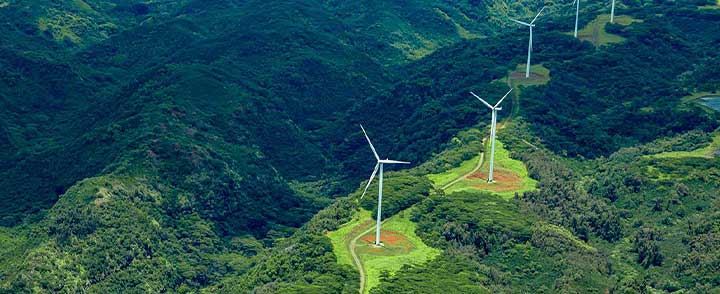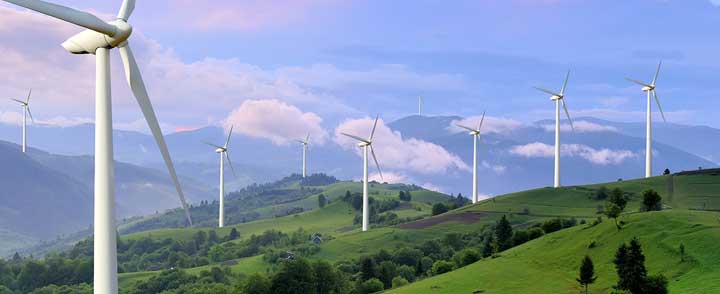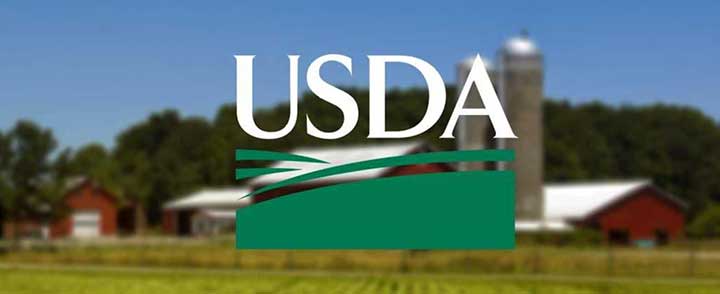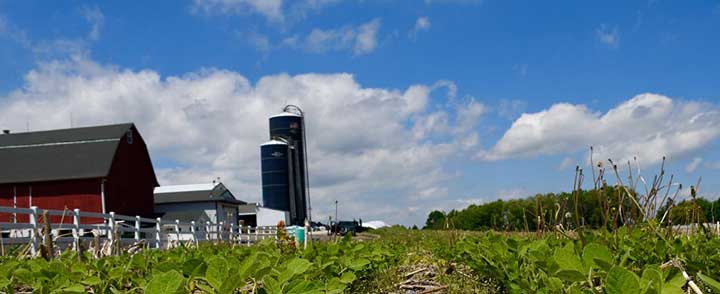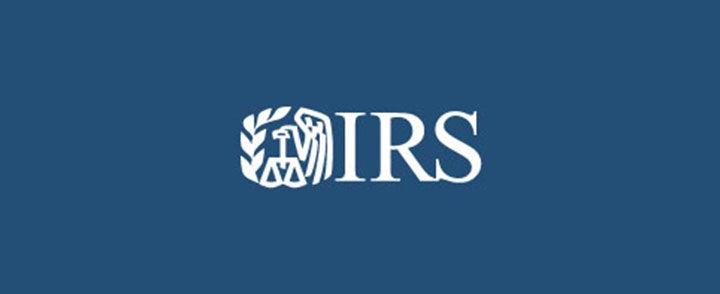Inflation Reduction Act Activation Guide: Climate-Smart Agriculture
Climate-Smart Agriculture
Inflation Reduction Act Activation Guide
Produced by EDF in collaboration with
A broad range of companies within the food sector can use IRA-funded agricultural programs to support their climate goals.
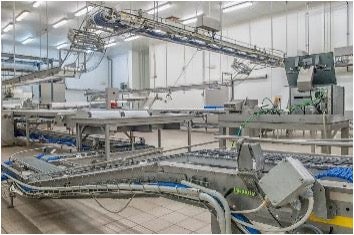
Food Processors
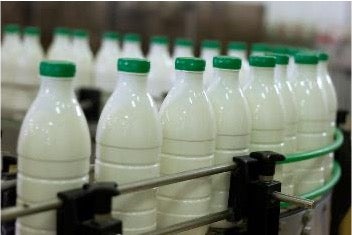
Beverage Companies
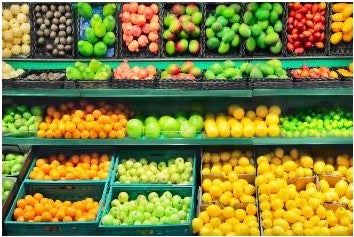
Grocery Stores

Wholesale Clubs
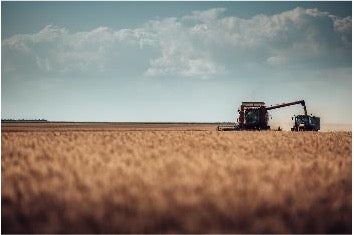
Agricultural Producers

Restaurants

Packaged Food Companies
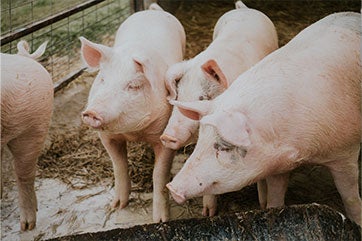
Meat Producers
The IRA adds ~$19.5 billion in funding to six agriculture-related programs to support on-farm sustainability over the next five years.
Sources: Deloitte Analysis, WH IRA Guidebook, US Congress, Holland & Knight, National Sustainable Agriculture Coalition, USDA
Key Relevant Programs
RCPP and REAP provide the most direct opportunities for companies to support agricultural producers’ climate action among IRA-funded programs.
Regional Conservation Partnership Program (RCPP)
Program
Provides federal funding for partner-driven collaborations to fund natural resource conservation and GHG reducing activities, including partnerships that may represent corporate supply chains.
Key Takeaways
- IRA adds $4.95 billion through 2026 and extends program to 2031
- Covers a variety of conservation activities on agricultural lands such as investments that address drought, wildfire, or water quality risks; reduction, capture, avoidance or sequestration of GHG emissions; or soil carbon improvements
- Incentivizes innovative contracting mechanisms, whereby project partners distribute federal funds alongside private funds via pay-for-performance/success contracts to agricultural producers
Rural Energy for America Program (REAP)
Program
Provides grants and guaranteed loan programs to agricultural producers for renewable energy systems, energy efficiency improvements, and energy efficient farm equipment.
Key Takeaways
- IRA adds $2 billion of funding to REAP in the next decade and increases grant share to 40% for all projects starting in 2023
- Covers a variety of renewable energy and energy efficiency technologies such as wind, solar, biomass (incl. anaerobic digesters), HVAC, lighting, fans, and automated controls
- Allows loans and grants to be combined to cover up to 75% of project cost, and can be further bundled with local, state, and federal incentives as well as tax credits
- Requires a 2-year timeline for the completion of the project
Sources: Deloitte Analysis, WH IRA Guidebook, Texas A&M University
The other four IRA-funded programs are primarily producer-led cost-shares, but companies can educate producers and encourage them to apply.
Environmental Quality Incentives Program (EQIP)
Program
Provides funds through NRCS contracts for financial and technical assistance for conservation practices.
Key Takeaways
- IRA adds $8.5 billion in funding
- Most suitable for introducing new conservation practices
- Covers practices such as nutrient management for crops and livestock, pest and irrigation management, climate change adaptation, and energy conservation
Conservation Stewardship Program (CSP)
Program
Provides funds through NRCS contracts to agricultural producers who agree to increase their level of conservation efforts.
Key Takeaways
- IRA adds $3.3 billion in funding
- Must be combined with other existing conservation practices
- Enables producers to expand their existing conservation practices through enhancements such as cover crop diversification, buffers, water management, no till, and wildlife-friendly fencing
Agriculture Conservation Easement Program (ACEP)
Program
Helps agricultural producers sell land easements to eligible entities who then receive NRCS funding for restoration and technical assistance.
Key Takeaways
- IRA adds $1.4 billion in funding
- Provides funding for easements or interests in land to eligible entities such as land trusts and state and local agencies
- Focuses on agriculture viability and conservation values of farmland, restoring/conserving grazing land, and protecting/restoring/enhancing wetlands
Conservation Technical Assistance (CTA)
Program
Provides funding to the NRCS to administer free conservation technical assistance to farmers, ranchers, and forestland owners.
Key Takeaways
- IRA adds $1 billion in funding
- Helps individual farmers or groups of land managers develop a conservation plan at no cost
- Includes helping producers identify conservation objectives and assess and analyze natural resources issues of the land
Notes: NRCS stands for National Resources Conservation Service, a sub-agency of the USDA. Climate-Smart Commodities Grants are not funded by the IRA and thus not included but can be used for similar purposes. Conservation Innovation Grants (CIG) are a sub-program of EQIP that also offer flexibility to apply across a supply chain to implement innovative practices and equipment.
Sources: Deloitte Analysis, P.L. 117-119, WH IRA Guidebook, USDA NRCS CTA Overview
Program Overview
RCPP Grants Description:
Connects producers/landowners with public, private, and/or nonprofit partners to design, implement, and fund solutions for natural resource conservation and sustainable land and water management at landscape scale
Period of Availability:
Funds available until September 30, 2031, with annual public RFPs; 1st round expected to open in May 2023
Timeframe and Funding:
Typically, 5-year contracts with option for one-time, 12-month extension; project can request funding between $250,000 and $10,000,000 over the life of the project
Incentive Type:
Grants/Cooperative Agreements/Contracts. Under the RCPP Grants project type, NRCS can grant entire project funding to the project partner for up to 15 projects per year. Producers then conclude contracts and easements with partners and receive payment from the organization leading the partnership. Partners are expected to provide additional direct funding, in-kind support, or a combination of the two to the producers of at least equal dollar value to what NRCS provides.
New or Modified Provision:
IRA added $4.95 billion through 2026 (prev. $100-$300 million per year) and extended program until 2031
Types of Projects
Eligibility Requirements
Partner Types:
Producer associations, farmer cooperatives, water and conservation districts, institution of higher education, and companies (e.g., food and beverage)
Partner Eligibility:
Partners must have the experience, expertise, and capacity to manage the partnership and project, provide outreach to producers/landowners, and quantify the environmental, social, and economic outcomes of a RCPP project
Producer and Landowner Eligibility:
Owner, landlord, operator, or tenant of eligible agricultural lands (i.e., agricultural, non-industrial, private forest) can either (1) enter into an agreement with a (lead) partner who has received funding or (2) apply directly to NRCS and implement activities consistent with an approved RCPP project in their geographic area
Geographical Scope:
50% of funding available in a fiscal year reserved for projects in Critical Conservation Areas (CCA), and 50% reserved for statewide and multi-state projects
Available January 1, 2023, until September 30, 2031
How to Apply
Partner Enrollment:
- Obtain authentication permission (use USDA RCPP Proposal Guide)
- Request access to the RCPP portal and NRCS verifies the partners’ authentication
- Request a meeting with the appropriate NRCS State RCPP coordinator
- Submit a project application in the RCPP Portal
Notes: Landscape scale refers to a defined geographical area such as states, regions, or watersheds.
Sources: Deloitte Analysis, USDA NRCS, WH IRA Guidebook, Texas A&M University, Grants.gov.
Sources: Deloitte Analysis, USDA Resources for RCPP Lead Partners, USDA NRCS, NRCS RCPP Lead Partner Guide
Program Overview
Provision Description:
Provides guaranteed loan financing and grant funding to agricultural producers and rural small businesses for renewable energy systems, energy efficiency improvements, and investments in agricultural production and processing
Period of Availability:
Funds available until September 30, 2031, with annual funding notices and limits; 1st round expected in May
Incentive Type:
Grants and loans with up to 85% guarantee. Grants and loans can be combined to cover up to 75% of total costs and can be combined with local, state, and federal incentives and tax credits. Per entity limit is $1.5 million per fiscal year.
New or Modified Provision:
Modified – the IRA provides $1.7 billion in new funding for REAP grants with an increase in maximum grant amount to 40% of project cost, and an additional $304 million for underutilized renewable energy technologies
Grant and Loan Amounts
Eligibility Requirements
Producer Eligibility Criteria:
- For-profit small businesses must be in rural areas with populations of 50,000 or less
- Agricultural producers must derive 50 percent or more of gross income from agricultural products (crops, livestock, nurseries, dairies) and may be in rural or non-rural areas
Funding Eligibility Requirements:
- Eligible project costs: Equipment, post-application construction and facility improvements, retrofitting, professional service fees, permits/license fees, working capital, land acquisition
- Ineligible projects costs: Residential energy projects, pre-application construction and facility improvements, application preparation or grant writer fees, line of credit, lease payments
Project Types (non-exhaustive):
- Renewable Energy Systems (e.g., biomass, anaerobic digester, wind, solar)
- Energy Efficiency Investments (e.g., HVAC, insulation, lighting)
- Energy Efficient Agricultural Production and Processing Equipment
Available January 1, 2023, until September 30, 2031
How to Apply
- Arrange meeting with a state USDA program specialist and agricultural producers
- Advise agricultural producers to preregister with the System for Award Management (SAM) and have a Unique Entity ID
- Facilitate agricultural producers’ applications to the applicable state USDA office or via grants.gov which can be done year-round
Notes: Project costs can only be reimbursed if incurred after agency has received the application.
Sources: Deloitte Analysis, P.L. 117-119, WH IRA Guidebook, USDA REAP Overview. 2023 RBCS – REAP Stakeholder Call Recording
Sources: Deloitte Analysis, USDA REAP Overview. 2023 RBCS – REAP Stakeholder Call Recording
Credit Overview
Provision Description:
Provides a tax credit for investment in renewable energy projects
Period of Availability:
Projects beginning construction before 1/1/25
Incentive Type:
Investment tax credit
New or Modified Provision:
Modified and extended to include standalone energy storage with capacity of at least 5 kWh, biogas, microgrid controllers (20MW or less), and interconnection property for projects with 5MW or less
Credit Amount (in % of investment cost):
- Prevailing Wage & Apprenticeship Bonus qualifies projects for 5x bonus multiplier times the base
- Domestic content bonus provides additional 10 ppt
- Energy community bonus and low-income bonus provide an additional 10 ppt and 20 ppt credit, respectively
Eligibility Requirements
Organization Types and Usage:
- Businesses that own or develop renewable energy projects
- Tax-exempt entities that fall under subtitle F of the IRC, Indian Tribal governments, rural electricity co-ops among others that own or develop renewable energy projects
Project Types:
Fuel cell, solar, geothermal, small wind, standalone energy storage, biogas, microgrid controllers, and combined heat and power properties. It includes solar powered heating and cooling as well as equipment that uses solar energy to illuminate the inside of a structure using fiber-optic distributed sunlight or electrochromic glass
- Fuel Cell
- Solar
- Energy Storage
- Wind
- Biogas (e.g., anaerobic digesters)
- Geothermal
Available for construction start dates between January 1, 2023, and December 31, 2024
How to Claim the Credit
- Fill out and file IRS Form 3468 or IRS Form 3800 to claim the ITC
- Review the initial IRS guidance on prevailing wage and apprenticeship requirements and the Environmental Justice Solar and Wind Capacity Limitation to assess opportunities for credit adders
- Review additional information regarding the ITC which can be found online using the Database of State Incentives for Renewables & Efficiency (DSIRE)
Sources: Deloitte Analysis, P.L. 117-119, WH IRA Guidebook, IRC.
Credit Overview
Provision Description:
Provides a technology-neutral tax credit for investment in facilities that generate clean electricity. Replaces the ITC for facilities generating electricity from renewable sources
Period of Availability:
Facilities placed in service after 12/31/24. Phase-out starts the later of a) 2032 or b) when U.S. GHG emissions from electricity are 25% of 2022 emissions or lower
Incentive Type:
Investment tax credit
New or Modified Provision:
New
Credit Amount (in % of investment cost):
- Prevailing Wage & Apprenticeship Bonus qualifies projects for 5x bonus multiplier times the base
- Domestic content bonus provides additional 10 ppt
- Energy community bonus provide an additional 10 ppt credit
Eligibility Requirements
Organization Types and Usage:
- Businesses that own or develop renewable energy projects
- Tax-exempt entities that fall under subtitle F of the IRC, Indian Tribal governments, rural electricity co-ops among others that own or develop renewable energy projects
Project Types:
Facilities that generate electricity with a GHG emissions rate that is no greater than zero and qualified energy storage technologies
Construction Start Date & Phase-Out:
- Construction start date dictates eligibility for ITC. However, ITC is claimed in the tax year that the facility is placed in service (IRS Guidance on construction start date)
- The credit will be phased out as the U.S. meets its GHG emissions reduction targets. (Facilities can claim 100% of credit in the first year after reaching the target, 75% in Year 2, 50% in Year 3, and 0% in Year 4)
Available for facilities placed in service between January 1, 2025, and likely 2032 and beyond
How to Claim the Credit
- Fill out and file IRS Form 3468 or IRS Form 3800 to claim the ITC
- Review the initial IRS guidance on prevailing wage and apprenticeship requirements to assess opportunities for credit adders
- Review additional information regarding the ITC which can be found online using the Database of State Incentives for Renewables & Efficiency (DSIRE)
Sources: Deloitte Analysis, P.L. 117-119, WH IRA Guidebook, IRC.
RCPP and REAP have a proven track record of promoting sustainable farming practices and increasing the deployment of renewable energy and energy efficiency in rural communities
RCPP
REAP
Sources: Deloitte Analysis, USDA 1, USDA 2, USDA 3, REAP Energy Efficient Equipment Case Study, REAP Railroad Valley Farms Case Study, REAP Precision Prefinishing Case Study
Every function has a role to play activating RCPP & REAP.
RCPP
- Assess Scope 3 / producer decarbonization and sustainable land use goals against corporate strategy
- Identify and prioritize climate risks, adaptation opportunities, and carbon benefits faced by producers
- Engage early-on with potential project lead partners that have deep subject matter expertise in conservation practices
REAP
- Assess Scope 3 decarbonization and sustainable land use goals against corporate strategy
- Identify and prioritize climate risks, adaptation opportunities, and carbon benefits that can be addressed through REAP and their alignment with company ESG and producer goals
RCPP
- Calculate projected abatement potential from producer decarbonization through sustainable farming practices and on-farm renewables and compare against goals, strategy, and alternative abatement projects
- Design incentive structure and financing mechanisms that best align RCPP program, company goals, and producer goals
REAP
- Estimate projected abatement potential, financial benefits, and non-financial benefits from successful uptake of different technologies under REAP for producers and company
- Assess against alternative programs to calculate opportunity cost of investment
- Conduct educational workshops with producers
RCPP
- Build business case with added IRA funding and determine amount of desired partner contribution (i.e., technical/in-kind and financial assistance) the company is planning to perform
- Include estimation of financial (to the company and producers) and non-financial benefits from conservation programs
REAP
- Calculate costs related to outreach and education of producers on REAP and compare with benefits from successful uptake of these programs among the company’s producers
- Assist with producers with obtaining financing for REAP-related investments under REAP guaranteed loan option
RCPP
- Assess eligibility of producers based on their geographic location (Critical Conservation Areas, state) and likelihood of being selected based on RCPP ranking criteria
- Engage with NRCS, project partners, or 3rd party service providers to fill gaps in RCPP program understanding
REAP
- Assess eligibility of producers based on their geographic location and other program criteria to determine likelihood of being selected for funding and aid in prioritization
- Engage with USDA Rural Development State Energy Coordinator or 3rd party service providers to fill gaps in program understanding
RCPP
- Identify individual or groups of producers in eligible Critical Conservation Areas and prioritize by conservation need
- Establish mechanism to interact and collaborate with producers on an ongoing basis (pre-, during and post-RCPP project) to successfully identify, engage, and implement (e.g., pay-for-performance contracts, MRV, payment schedules)
REAP
- Identify individual or groups of producers that are likely eligible for REAP and prioritize by abatement impact
- Establish mechanism to interact and collaborate with producers on an ongoing basis to successfully identify, engage, and implement USDA programs
- Support educational workshops with producers
RCPP
- Meet and consult with Lead State NRCS office responsible for the conservation area in which producers are located
- Establish regular stakeholder dialogue cadence between State NRCS office, producers in CCA, lead partner, and other potential partners
REAP
- Meet and consult with USDA Rural State Energy Coordinator offices in each geography where producers are located to confirm producer eligibility and support application
Credit: Environmental Defense Fund and Deloitte
This document was produced by Environmental Defense Fund in collaboration with Deloitte Consulting LLP. The views within the report are that of Environmental Defense Fund, and do not necessarily reflect the views of report partners or collaborators.This document contains general information only and Deloitte is not, by means of this document, rendering accounting, business, financial, investment, legal, tax, or other professional advice or services. This document is not a substitute for such professional advice or services, nor should it be used as a basis for any decision or action that may affect your business. Before making any decision or taking any action that may affect your business, you should consult a qualified professional advisor. Deloitte shall not be responsible for any loss sustained by any person who relies on this document.
About Deloitte
Deloitte refers to one or more of Deloitte Touche Tohmatsu Limited, a UK private company limited by guarantee (“DTTL”), its network of member firms, and their related entities. DTTL and each of its member firms are legally separate and independent entities. DTTL (also referred to as “Deloitte Global”) does not provide services to clients. Please see www.deloitte.com/about for a detailed description of DTTL and its member firms. Please see www.deloitte.com/us/about for a detailed description of the legal structure of Deloitte LLP and its subsidiaries. Certain services may not be available to attest clients under the rules and regulations of public accounting.Copyright © 2023 Deloitte Development LLC. All rights reserved. 36 USC 220506 Member of Deloitte Touche Tohmatsu Limited
Our Experts

Victoria Mills
Managing Director
Environmental Defense Fund
vmills@edf.org

Katie Anderson
Director, Resilient Food and Forests
Environmental Defense Fund
kanderson@edf.org
Sign up for Climate Policy News you can use
"*" indicates required fields
